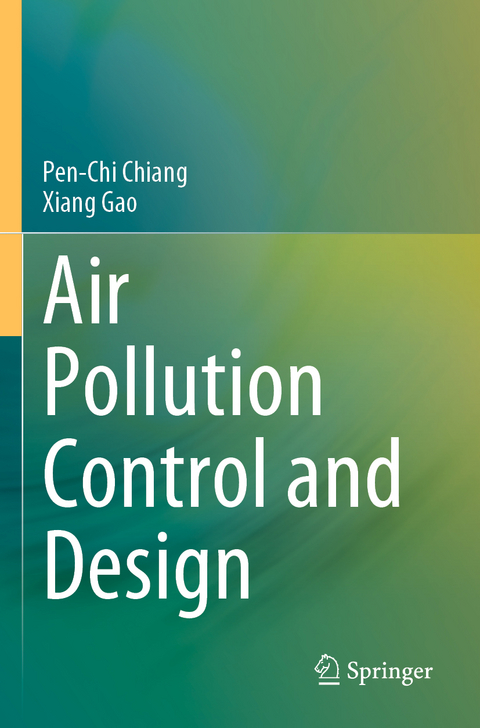
Air Pollution Control and Design
Springer Verlag, Singapore
978-981-13-7490-6 (ISBN)
Professor Chiang began engaging in teaching and research activities in National Taiwan University since he obtained Ph.D. degree from the Department of Civil Engineering, Purdue University, USA in 1982. He is a Distinguished Professor of Graduate Institute of Environmental Engineering and a Director of Carbon Cycle Research Center of National Taiwan University. Professor Chiang is known for his work in physicochemical treatment such as carbon adsorption, membrane and ozonation processes. In addition, he was also devoted to his teaching and research in the area of carbon capture technology, air pollution control design and cleaner production technology. He has published more than 300 paper papers in the above area of environmental engineering. Professor Chiang has received numerous awards for research achievements, including Fellow of Water Environment Federation (WEF), BCCE of American Academy of Environmental Engineers and Scientists (AAEES), and Diplomat of the American Academy of Water Resources Engineers of the American Society of Civil Engineers (ASCE), Outstanding Research Contribution Award, Executive Yuan, Outstanding Research Award, National Science Council, and Distinguished Chinese Institute of Engineer Research Award. Xiang Gao is currently the dean and a professor of the College of Energy Engineering, Zhejiang University, Hangzhou, China, and the director of Coal-Fired Air Pollution Control Engineering Center for Ministry of National Environmental Protection, China. He received his B.S. and Ph.D. degrees from Zhejiang University. His research focuses on simultaneous removal of multi-pollutants (NOx, SOx, particulate matter, and heavy metal, etc.) in flue gas, flue gas desulphurization, flue gas denitration, PM2.5 Control, and energy-saving technology. He has won First prize of the National Award for Technological Invention, Second prize of the National Award for Scientific and Technological Progress, Second prize of the National Award for Technological Invention, Second prize of the National Award for Teaching Achievements, the Chinese Outstanding Patents Award, etc. He has published more than 200 peer-reviewed papers, more than 60 invention patents (including 3 international patents) and involved in more than 30 authorized national/industrial standards as a leading or important role.
Chapter 1. Air Pollution Control: SOx Control.- Chapter 2. NOx Control.- Chapter 3. VOCs Control.- Chapter 4. PM2.5 Control.- Chapter 5. CO2 Control.- Chapter 6. Fundamentals of Energy Utilization: Sustainable Energy.- Chapter 7. Thermal Dynamics and Heat Transfer.- Chapter 8. Advanced Combustion.- Chapter 9. Energy Materials.- Chapter 10. Integrated Energy Systems.- Chapter 11. Gaseous Control and Design: Adsorption.- Chapter 12. Absorption.- Chapter 13. Combustion.- Stack.- Chapter 14. Particulate Control and Design.- Chapter 15. Cyclone.- Chapter 16. Wet Scrubber.- Chapter 17. Baghouse Filter.- Chapter 18. Electrostatic Precipitator.- Chapter 19. Prospective and Perspective.
| Erscheinungsdatum | 19.10.2023 |
|---|---|
| Zusatzinfo | 133 Illustrations, color; 275 Illustrations, black and white; XIV, 688 p. 408 illus., 133 illus. in color. |
| Verlagsort | Singapore |
| Sprache | englisch |
| Maße | 155 x 235 mm |
| Themenwelt | Naturwissenschaften ► Biologie ► Ökologie / Naturschutz |
| Naturwissenschaften ► Geowissenschaften | |
| Sozialwissenschaften ► Soziologie | |
| Technik ► Elektrotechnik / Energietechnik | |
| Technik ► Umwelttechnik / Biotechnologie | |
| Wirtschaft ► Betriebswirtschaft / Management | |
| Schlagworte | Air Pollution Mechanism • Best Engineering Practice • Energy utilization • Greenhouse Gas • Particulate Matter Control |
| ISBN-10 | 981-13-7490-2 / 9811374902 |
| ISBN-13 | 978-981-13-7490-6 / 9789811374906 |
| Zustand | Neuware |
| Haben Sie eine Frage zum Produkt? |
aus dem Bereich


